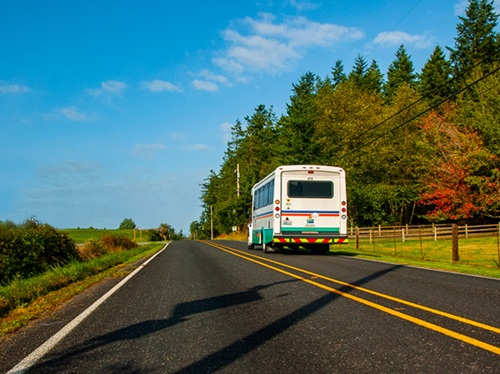What will transportation in the United States look like as precautions designed to prevent the spread of COVID-19 are lifted? Will air travel and public transit ridership return to pre-pandemic levels? Will commuters opt to ride bicycles more often? Or will driving become more prominent instead?
[Above photo by the Federal Transit Administration.]
Those are some of the questions the Transportation Research Board said its latest National Cooperative Highway Research Program report – Traffic Forecasting Accuracy Assessment Research – is designed to help answer; by improving the accuracy, reliability, and utility of project-level traffic forecasts in conjunction with other modal use analysis.

“There are all kinds of reasons why actual numbers would be different from forecasted predictions [and] COVID-19 is a perfect example,” explained Greg Erhardt, assistant professor of transportation at the University of Kentucky and a principal investigator for this NCHRP report.
“The events that can cause errors in our forecasts are often bigger or different than we might anticipate, so it is important to look back at past inaccuracies when considering future uncertainties,” he noted in a TRB blog post. “This research does just that by providing a method to estimate a window of uncertainty around a forecast based on the accuracy of past forecasts. Reviewing forecasts for accuracy is a retrospective action and the window of uncertainty is prospective. These two aspects can complement each other to improve forecasts.”
Funded by participating members of the American Association of State Highway and Transportation Officials, NCHRP also receives critical technical support from the Federal Highway Administration and the U.S. Department of Transportation.

This particular NCHRP report focuses on project-level traffic forecasts for U.S. public roads and suggests way to improve their predictive capability, especially in light of the COVID-19 pandemic:
- Evaluate the detailed accuracy of past forecasts once you know the outcomes offer an opportunity to identify unanticipated changes or risks that are ingrained in the model.
- Build in testing the ability of models to correctly predict changes that occur when a project opens, which can improve future models.
- Use Large-N analysis (looking for patterns in a large number of cases) to help determine whether some methods produce more accurate forecasts.
Models look at factors like trip generation, mode choice and availability, timing, and more, TRB noted, with the scale and scope of travel obviously affecting the methodology used in such traffic analysis. Thus, on a large scale, the NCHRP report entitled Statewide and Megaregional Travel Forecasting Models: Freight and Passenger synthesized practices and emerging trends with travel forecasting models.

That report noted that states address forecasting for topics like congestion pricing, multi-state corridors, and new transportation modes in a variety of ways depending on their geographical or societal situation. Robust models of freight require macroeconomic forecasts and require parallel partnerships with other state agencies responsible for economic forecasting. Case studies in the statewide and megaregional report explore these situations.
On the other hand, long distance and rural travel are generally not included in statewide forecasts. That is where the findings from the NCHRP report entitled Long-Distance and Rural Travel Transferable Parameters for Statewide Travel Forecasting Models aims to provide “transferable parameters” for such travel into statewide traffic forecasting models. As with freight forecasting, understanding niche industries like rural tourism and resorts requires unique forecasting, TRB said.
The organization added that it will explore ways to integrate recreational travel demand into overall transportation system forecasting with an active NCHRP project. Incorporating these specific locations will help enable better-informed decisions about investments in multimodal transportation improvements and economic development, TRB said – especially as states recover from the economic and travel fallout from the COVID-19 pandemic
 Top Stories
Top Stories
Modal Administrators Speak at AASHTO Annual Meeting
December 5, 2025 Top Stories
Top Stories

